Chapter 1
The Integrity Agenda
Bridging the gap between management intentions and the actual behavior of employees.
Be it the ethical challenges of Artificial Intelligence, the rise of cybercrime in tandem with the boom in digital, the impact of automation on jobs, innovation will always present unanticipated consequences. While these implications will have to be dealt with on a case-by-case basis as they arise, the key is to make the most of the positives while minimizing the negatives.
Success will be driven by how this industry approaches innovation in the first place. Accurate and realistic anticipation will often mean looking beyond the immediate applications – working with other stakeholders and wider society to identify potential uses and abuses.
While this Transformative Age digitally presents a challenging operating environment for every industry, a proactive approach is vital to maximize the benefits.
In pursuit of responsible innovation
The EY report explores how TMT organizations can manage these risks (pdf).
The key is to find ways to contribute constructively to the development of a new digital agenda – one that balances innovation and responsibility, opportunity and risk, and entrepreneurship and restraint. Entrepreneurship and restraint is the most important balance to strike, in that it blends innovative endeavor and ethical wisdom.
As a starting point, organizations should go beyond traditional risks, policies and procedures and seek to become more proactive in their attitude towards compliance and ethics. One of the most effective ways to do this is by digitizing compliance. This could include implementing the latest compliance technology tool as and new ways of data analytics to help mitigate risk and increase transparency, as well as introducing digitally-managed compliance services and tools to provide real time guidance to employees.
Beyond digitization, traditional rule-based compliance programs are also transforming to behavioral-based approaches. This is something we call the Integrity Agenda. It’s about closing the gap between management intentions and the actual compliance understanding and ethical behavior of employees and third parties on the ground. Underpinned by a digital integrity strategy, developing an Integrity Agenda can act as an effective compass for navigating this new landscape of risk.
Integrity on the agenda
98%of TMT respondents say it’s important to be able to demonstrate your organization operates with integrity.
To develop their own Integrity Agenda, organizations should focus their efforts on measuring governance, culture and controls, supported by data analytics, to help align individual actions with organizational objectives. We recommend focusing on four key areas to make this a success – and developing frameworks to measure progress against each:
- Governance – Develop an integrity program structure, embedding standards of behavior for employees and third parties acting on the organization’s behalf.
- Corporate culture – Strengthen the culture that guides day-to-day ways of working and taking decisions, focusing on managing the risks, pressures and beliefs that influence employee decisions.
- Controls – Identify the root causes of integrity failures and improve related policies, procedures and processes.
- Data analytics – Embed analytics in digital compliance tools to reveal data-based insight on emerging risks and illegal and unethical conduct, and track improvement in behavior.
The outcome of this approach can help people do the right thing because they believe it’s the right thing to do.
The emerging TMT approach to integrity
The industry itself appears to be increasingly championing integrity. According to the EY Global Fraud Survey 2018, 98% of TMT respondents felt it was fairly or very important “to be able to demonstrate that your organization operates with integrity.”
As a result of this new social consciousness, the industry is making considerable efforts to find technological solutions that better protect companies and individuals, such as data analytics and cybersecurity. One respondent told us their company is even developing cloud-based software to give customers a transparent view of how their algorithms make decisions and the factors underlying them.
TMT organizations play a special role in taking responsibility and managing the new ethical challenges facing companies, industry and society in the era of AI and technology-enabled business models.
Executives of TMT companies interviewed for the EY Global Fraud Survey 2018 placed customer and public perception as the top benefits of demonstrating integrity, higher than successful business performance and shareholder perception. It’s no wonder, then, that companies in the industry have mounted a proactive campaign to engage and communicate with the wider community on digital dilemmas.
Clearly, though, much needs to be done beyond technology: engagement in a public discourse with stakeholders, from governments to consumers, has become critical.
On an industry level, we need to remove the potential obstacles to growth such as regulation, walk-outs and civic actions by anticipating and addressing the concerns that would make these actions necessary.
On a broader societal level, we need to find real solutions to apparently intractable problems with the help of wide stakeholder engagement – a kind of cross-sector, cross-profession crowdsourcing of ideas from ethicists, behavioral scientists and philosophers, among others.

Chapter 2
Helping “Globalization 4.0” succeed – together
A joined-up effort of “digital ethics” is key to realize the maximum societal benefit of new technologies.
Cross-organizational, cross-sector collaboration is increasingly paramount to ensure the full range of perspectives, applications, opportunities and concerns are considered when developing and deploying new technologies.
Being the powerhouse of technological development, the TMT sector is a natural center of gravity for collaboration, innovation and social change. Not only does it attract and retain some of the brightest scientific and engineering minds in the world, it has a strong financial and asset base for R&D. It also has an ability to create and access the world’s most advanced technology infrastructures – and to collect, analyze and monetize a vast proportion of private and public data.
Yet the TMT sector’s challenge is bringing together leaders of the industry, former employees, government officials and academics from different disciplines in a serious collaborative effort. It’s about joining, informing, supporting and funding useful collaborative initiatives – such as EY’s Embankment Project for Inclusive Capitalism (pdf) (EPIC), which represents a variety of participants from across the entire investment chain. The Project works to identify the value drivers important for sustainable and inclusive growth, as well as potential metrics for assessing these.
Already, a host of other organizations have emerged to examine the area – including universities, think-tanks, and NGOs. Leading TMT organizations are also taking proactive measures in terms of governance and management, working to provide their employees and investors, as well as customers and consumers, with guidance and direction. Many leading organizations have adopted ethical codes to this end. And over the last year, we’ve seen many take a far more proactive role in public debate and dialogue.
Yet whether Globalization 4.0 is truly realized will largely depend on the level of integrity, ethics and proactivity employed by the organizations driving it. The conversation of digital ethics is happening now – the TMT sector needs to play a leading role in shaping the next phase of the dialogue, while also being ready to listen. Only then will it be able to truly imagine and shape what could come beyond, and seize the upside of disruption with responsibility and sustainability.
Summary
“Globalization 4.0” is a vision for a more positive form of global growth. This vision may be largely driven by digital transformation, with Technology, Media & Entertainment, and Telecommunications (TMT) organizations leading the way through technological innovation. Yet only by working with key stakeholders and across sectors can the vision be truly realized and benefit society at large.


